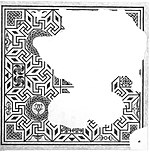Shrubhill Common
Common land in EnglandHemel HempsteadLocal Nature Reserves in Hertfordshire

Shrubhill Common is a 9.8 hectare Local Nature Reserve in Hemel Hempstead in Hertfordshire. It is owned and managed by Dacorum Borough Council. The site is common land, and it is part of the Chilterns Area of Outstanding Natural Beauty.The common is woodland and scrub, together with two fields which are chalk grassland. In 2014 23 species of butterfly were recorded, including marbled whites. There are over 100 species of wild flowers, and herbs such as marjoram and basil. There is access from Shrub Hill Road.
Excerpt from the Wikipedia article Shrubhill Common (License: CC BY-SA 3.0, Authors, Images).Shrubhill Common
The Chiltern Way, Dacorum Chaulden
Geographical coordinates (GPS) Address Nearby Places Show on map
Geographical coordinates (GPS)
| Latitude | Longitude |
|---|---|
| N 51.7539 ° | E -0.502 ° |
Address
The Chiltern Way
The Chiltern Way
HP1 2PE Dacorum, Chaulden
England, United Kingdom
Open on Google Maps




